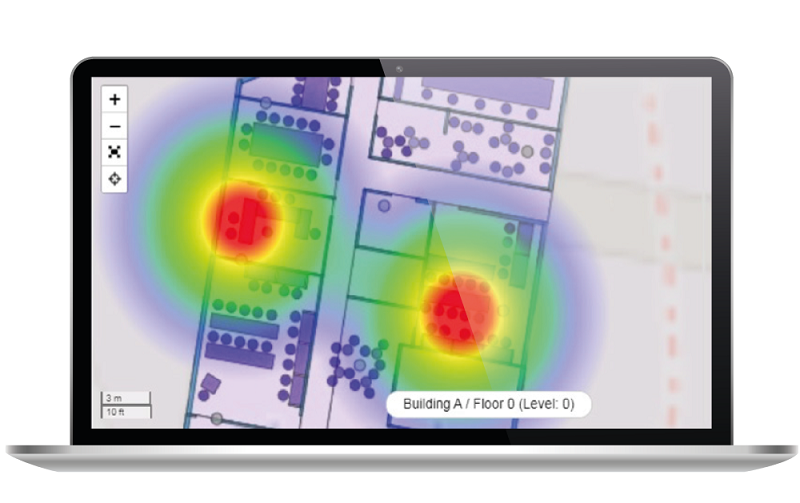As human beings, we have the remarkable ability to track an abundance of information.
Our mobile phones alone can keep tabs on our location, online activity, sleep patterns, step count, heart rate, and much more.
The depth of data we can monitor is truly astounding.
In healthcare settings, like hospitals, countless challenges arise on a daily basis – ranging from financial constraints to operational and security obstacles.
And, while locating individuals or essential equipment may not initially appear as a top priority, the ramifications are alarming when we consider the amount of valuable time wasted in the process.
This inefficiency translates into wasted finances and, even more importantly, diminished patient care.
Research shows that more than a third of nurses spend at least one hour per shift searching for medical equipment for their patients. Such a substantial portion of their time spent on non-care-related tasks is detrimental, both to the healthcare professionals and the patients they serve.
But streamlining the process of locating medical equipment can significantly improve overall healthcare efficiency and patient outcomes.
A matter of life and death
Whether responding to emergencies or monitoring equipment usage or maintenance needs, easily locating ‘the right tools for the job’ in healthcare can be a matter of life or death.
Moreover, ensuring the safety and security of personnel – from clinicians to patients and indeed newborn babies – is of utmost importance.
The ability to swiftly dispatch assistance during critical situations relies on knowing the precise location of individuals.
Contact tracing provides instant awareness of people flow, occupancy management, exposure to viruses, and warnings to anyone affected.
Streamlining the process of locating medical equipment can significantly improve overall healthcare efficiency and patient outcomes
Implementing asset tracking enables healthcare providers to monitor critical and non-critical assets in real-time using floorplan maps.
This includes essential items like beds, wheelchairs, infusion pumps, and biometric monitors, as well as the ability to quickly locate staff and high-risk patients, such as the elderly, who may wander.
But the insights provided by asset tracking go beyond just current locations.
It also reveals usage patterns, even when equipment is not in use, such as how long people wait to access medical equipment, the storage duration of assets, the frequency of equipment servicing, and the time personnel spend searching for people and equipment.
Visual contact tracing provides instant oversight of people flow, occupancy, exposure to viruses, and warnings
Changing the game
Bluetooth Low Energy (BLE) has emerged as a game-changing technology for asset tracking.
BLE offers superior location accuracy compared to other technologies like radio-frequency identification (RFID) or Wi-Fi and consumes less energy, resulting in longer battery life and reduced operational and maintenance costs.
Implementing a BLE solution alongside an intuitive smartphone app empowers staff to locate personnel and assets on a floorplan map through a simple auto-text search.
Moreover, registering BLE tags for relevant assets or staff is easy, streamlining IT processes.
Implementing a BLE solution alongside an intuitive smartphone app empowers staff to locate personnel and assets on a floorplan map through a simple auto-text search
A BLE-based asset tracking solution not only provides accurate tracking without the need for additional costly overlays; it also seamlessly integrates with existing Wi-Fi infrastructure, boasts improved battery efficiency over Wi-Fi technology, and ultimately ensures a better return on investment concerning equipment, deployment, and operational expenses.
A pro-active approach
Healthcare organisations invest substantial resources in medical equipment, and asset tracking helps prevent loss and theft.
By implementing geo-fencing technology and real-time tracking, healthcare providers can monitor the movement of assets and receive immediate notifications if they move beyond designated areas.
This pro-active approach reduces the risk of equipment loss or theft, saving costs and ensuring the availability of critical resources.
Contextual information and seamless integration with existing systems play a crucial role in successful asset tracking implementation.
Implementing asset tracking with front-end systems, like iDocs, provides a unified and user-friendly interface for healthcare professionals.
Asset tracking enables critical events to be immediately escalated to the appropriate personnel, speeding up decision-making and potentially saving lives
This integration not only saves costs by minimising asset losses, but also prevents alarm fatigue and false alarms, reducing burnout among nurses and clinicians.
Asset tracking enables critical events to be immediately escalated to the appropriate personnel, speeding up decision-making and potentially saving lives.
Bluetooth Low Energy (BLE) is a game changer for asset tracking
Leading from the top
Overcoming challenges in implementing asset tracking effectively requires a clinician-led approach.
Collaborating with IT staff and involving frontline healthcare professionals ensures a focus on patient care and optimal outcomes.
Demonstrating the feasibility and benefits of asset tracking should begin with the adoption of proof-of-concept projects, starting with non-clinical areas and gradually expanding to encompass clinical settings.
Open API asset tracking solutions enable seamless integration with existing clinical apps, ensuring compatibility and enhancing workflow efficiency.
The time to embrace asset tracking in healthcare is now, as it improves patient flow, the patient care journey, and the move to the hospital and care community of the future
The implementation of asset tracking in healthcare settings offers immense benefits, improving patient care and operational efficiency. Rainbow, as a powerful workforce engine, seamlessly integrates asset tracking into clinical devices, revolutionising data access and utilisation.
By harnessing the advantages of asset tracking, healthcare organisations can make informed decisions, enhance patient care, and drive operational efficiency.
The time to embrace asset tracking in healthcare is now, as it improves patient flow, the patient care journey, and the move to the hospital and care community of the future.
